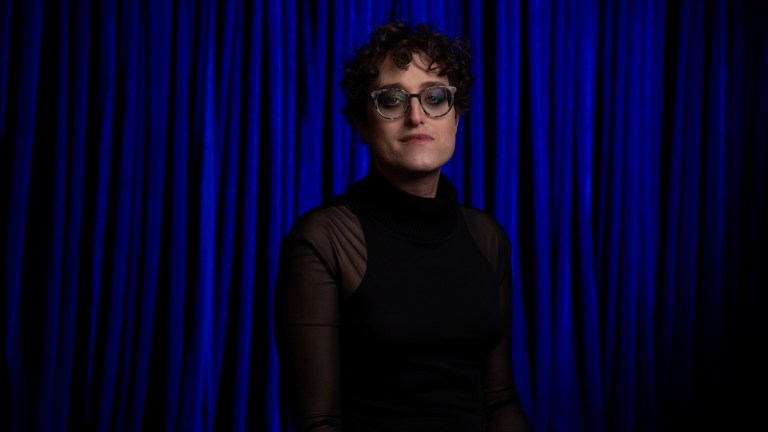I Saw the TV Glow Director to Finally Adapt an Iconic Graphic Novel
Netflix has found the right director for the bleak comic book classic.

It’s a good time for people who want to feel bad. Black Hole is finally coming to live action.
After more than a decade of false starts, in which everyone from David Fincher to Neil Gaiman to Rick Famuyiwa tried to get involved, Deadline is reporting that the legendary comic by Charles Burns is being made. Jane Schoenbrun, who directed last year’s indie horror hit I Saw the TV Glow will be the one who finally gets to bring the story to the screen, as a Netflix series.
Originally published as 12 issues between 1995 and 2005, Black Hole tells the story of teens in 1970s Seattle whose bodies undergo strange mutations after sexual contact. After contracting what they call “the Bug,” many of the teens are driven from society, and form their own community in the woods outside their town.
More than its plot, Black Hole is driven by Burns’s striking visual style. He concocts a variety of physical transformations for the teens, ranging from a cute tail on one victim to pustules over the face of another to a human turned into a bug creature. Burns’s ability to capture nuanced facial expressions, combined with his heavy use of black inks, makes Black Hole a uniquely haunting story, and a challenge for any creative to bring into live action.
It’s hard to think of a current filmmaker better suited to that challenge than Schoenbrun. Their 2021 debut We’re All Going to the World’s Fair and I Saw the TV Glow both build horror from the uncanny experience of feeling out of place in one’s body. Both films deal with desires that cannot be spoken, and the terror caused by those desires, as well as the hope that even fleeting moments of community can provide. Moreover, Schoenbrun crafts surreal visuals that fit the comic’s dreamlike state.
Schoenbrun is currently finishing work on their follow-up to TV Glow, the slasher riff Teenage Sex and Death at Camp Miasma. It will release next year and bring to a close their Screen Trilogy.
Netflix also seems like a natural home for Black Hole, as a series gives Schoenbrun more room to explore the themes in all 12 issues of Burns’s comic. That said, one cannot help but worry that Netflix isn’t looking at Black Hole as a potential replacement for Stranger Things. That megahit series comes to an end in December 2025, after becoming a sensation for its horror trappings, its story about a group of outsiders, and its 1980s setting. It’s easy to see how an executive would look at Black Hole, see a 1970s setting and a group of weirdos banding together, and imagine they’ve found a natural follow-up.
Hopefully, Netflix will realize that they have a genuine cult story and a genuinely unique filmmaker. If they give Schoenbrun the room to interpret Burns’s story in their own way, Black Hole could truly be something special. Maybe not a hit that will sell T-shirts in Target, but something special nonetheless.
